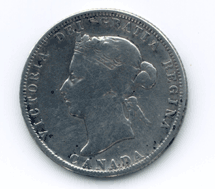|
July 2003 was the centenary of the building of the United Church
in Manotick, Ontario. In July1903, a time capsule filled with memorabilia
was inserted ceremonially behind the church’s cornerstone.
When it was removed from its century-long resting place last summer,
the time capsule proved to be a stoppered glass bottle in which
could be seen tightly rolled documents. Since Time Capsules (CCI
Notes 1/6) was published, the process of opening such containers
has become a little less problematic for people who have not dealt
with this kind of material before. Nevertheless, help from CCI was
welcomed because the ground-glass stopper of the bottle was sealed
with a resinous material that resisted opening. On testing, the
sealant proved to be gum arabic. Gentle warming and application
of a little moisture soon released the stopper. Among the newspapers,
journals and handwritten material carefully removed from the bottle
were several coins of the period.
As is common in time capsules, deterioration of the acidic paper
documents within the closed environment had caused the metal objects
to corrode significantly. Figures 1 and 2 show the copper and
silver coins as they came out of their resting place between layers
of paper. The copper coins were covered with a crusty green corrosion
layer, completely obliterating their designs, while the silver
had a thinner, black layer of corrosion. At first sight, such
coins can be disappointing to the officials who are present at
the opening, especially the copper ones, which in this case appeared
to be beyond recovery. It was the general consensus that nothing
could be done with them. However, microscopic examination showed
that beneath the loose, crystalline surface the original features
were remarkably intact. This is a common feature of copper objects.
With judicious chemical treatment and careful work with picks
and scrapers, much of the original surface can be recovered. CCI’s
most recent publication (Metals and Corrosion: A Handbook for
the Conservation Professional) provides a wealth of examples of
corrosion products with accompanying colour pictures. It also
gives insight into the complicated and intriguing nature of metals
and their reactions with the environment.
Once the identity of the corrosion on the Manotick time capsule
coins had been established, treatment was fairly straightforward.
For the copper coins, a dilute solution of sodium sesquicarbonate
was applied to each one. Once it had begun to react, the corrosion
products could be gently picked away.
When the original features had been revealed, an application
of mild metal polish brought back the shine. Figure 3 shows one
of the one-cent coins after treatment. The blackened surface of
the silver coins was easier to treat. The corrosion was gently
removed with silver polish on a small cotton swab, resulting in
an almost perfect return to the original bright appearance, as
the quarter in Figure 4 shows. |
 |


|